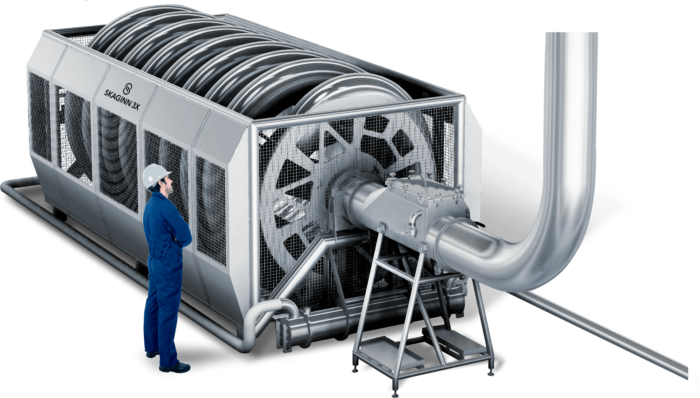
For years producers have been honing their profits and efficiency with technology like automation and realizing economies of scale as they expand. And these advancements will continue to serve producers. But as conditions change and innovation drives new technology, seafood processors are focusing future efforts on cost efficiency and value realization. And as these new innovations become standard practice, a new landscape emerges where technology creates task-dense processes rich with value realization, enabling not only higher product quality but also better profits and improved sustainability.
Finding Opportunity in Conveyance
One of the most auspicious trends in value-realization is the work to reconceive conveyance as a process that can offer far more value. The process of conveyance itself is made efficient, but the real benefit stems from other concurrent processes that are coupled with conveyance. For ages, producers have relied on conventional conveyors belts and elevators, but the nature of these modes of conveyance is that the product is generally exposed to an open environment and that during this step of the process only a single task is performed; namely, conveyance. For a time-sensitive product like seafood, being able to perform multiple tasks at once is especially beneficial when it comes to cost-efficiency and quality.
“And in the wake of the coronavirus outbreak, maintaining a closed system is essential to meet demands for higher standards of hygiene among producers.“
What’s more, there are also early adopters who have already implemented improved systems into their processes based on this understanding. ValuePump™ systems from Icelandic tech innovator Skaginn 3X are showing a lot of promise when it comes to both processing value realization and cost efficiency. These systems are used in place of conventional belts and elevators in favor of a closed pipe system where product suspended in a fluid is gently propelled forward by a low-pressure current. And in the wake of the coronavirus outbreak, maintaining a closed system is essential to meet demands for higher standards of hygiene among producers.
Value-Added Tasks Are the Future
And while improving on basic conveyance is a step forward, the most striking advantage of systems like these is in the platform it creates to add concurrent value-added processes like bleeding, chilling, disinfecting, boiling, soaking and washing products, which can range in size from a few grams up to whole fish and poultry. ValuePump™ systems are already in use to wash and convey fish livers, disinfect and convey whole chickens and chill, bleed and convey farmed salmon. And with its ability to perform multiple tasks simultaneously, producers are also benefiting from the synergies created, like saving on space, energy and material resources like water.
The value-added processes, synergies and improvements to basic conveyance serve to lower costs while resulting in higher product quality, which, in the end, delivers greatly improved cost-efficiency. When coupled with other emerging trends in the industry like growing demand for frozen product and for better freezing and chilling solutions, systems like the ValuePump™ offer producers the kind of flexibility to answer changing demands with an efficient and sustainable processing solution.
Other advancements on the horizon of the fish processing like SUB-CHILLING™ — which eliminates the need for ice in processing, lengthens product shelf life and lowers transportation costs by up to 20% — when combined with value-added processes like those enabled by the ValuePump™, are the most promising fixtures as we move into the future of fish processing, which a focus on how optimizing quality goes hand in hand with achieving higher sustainability goals and maximizing profits.
